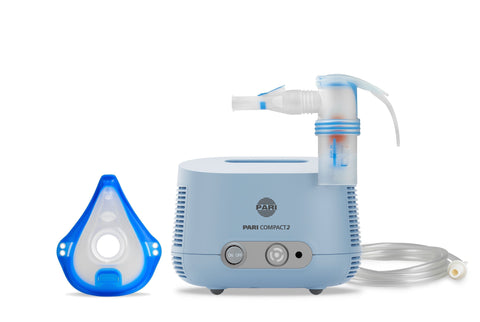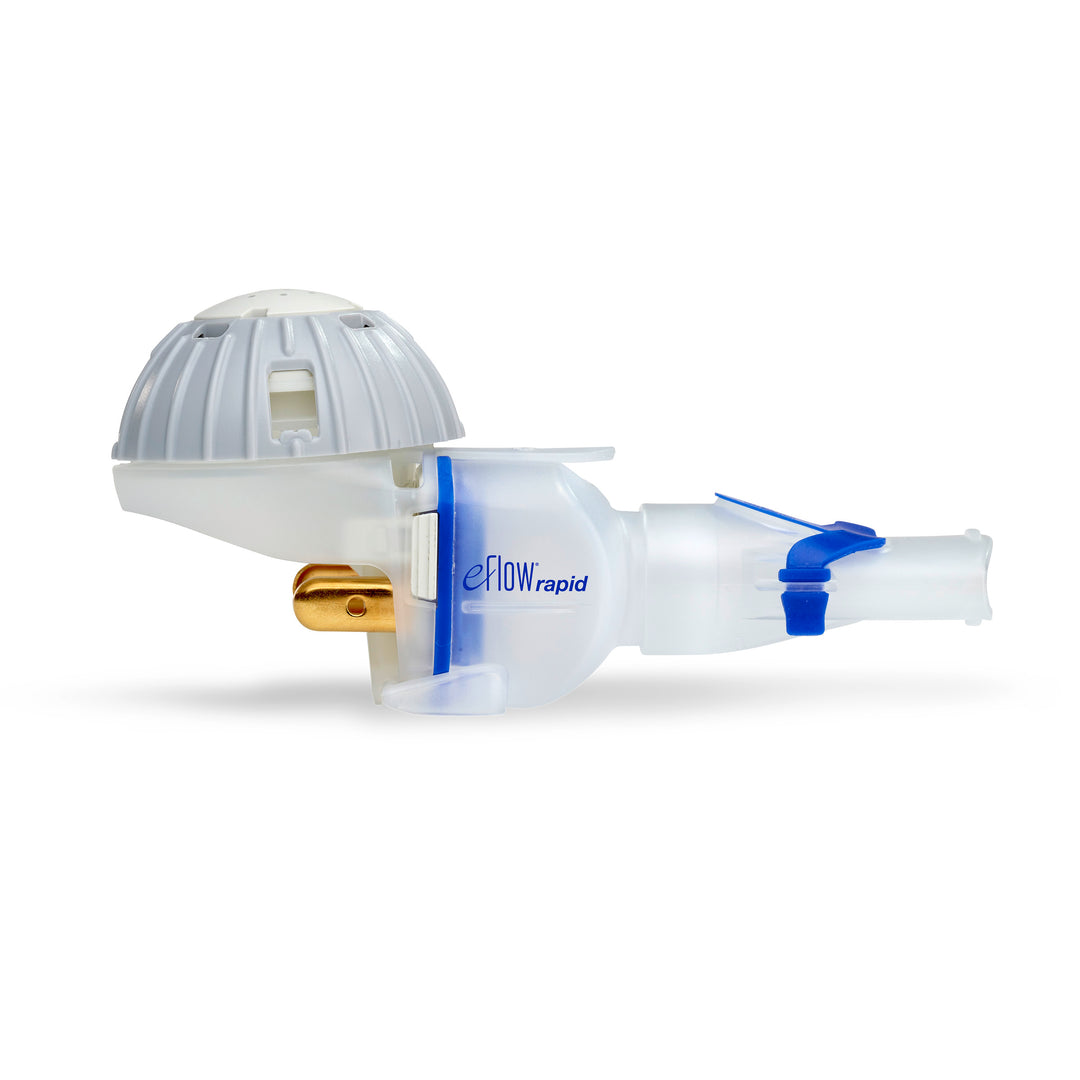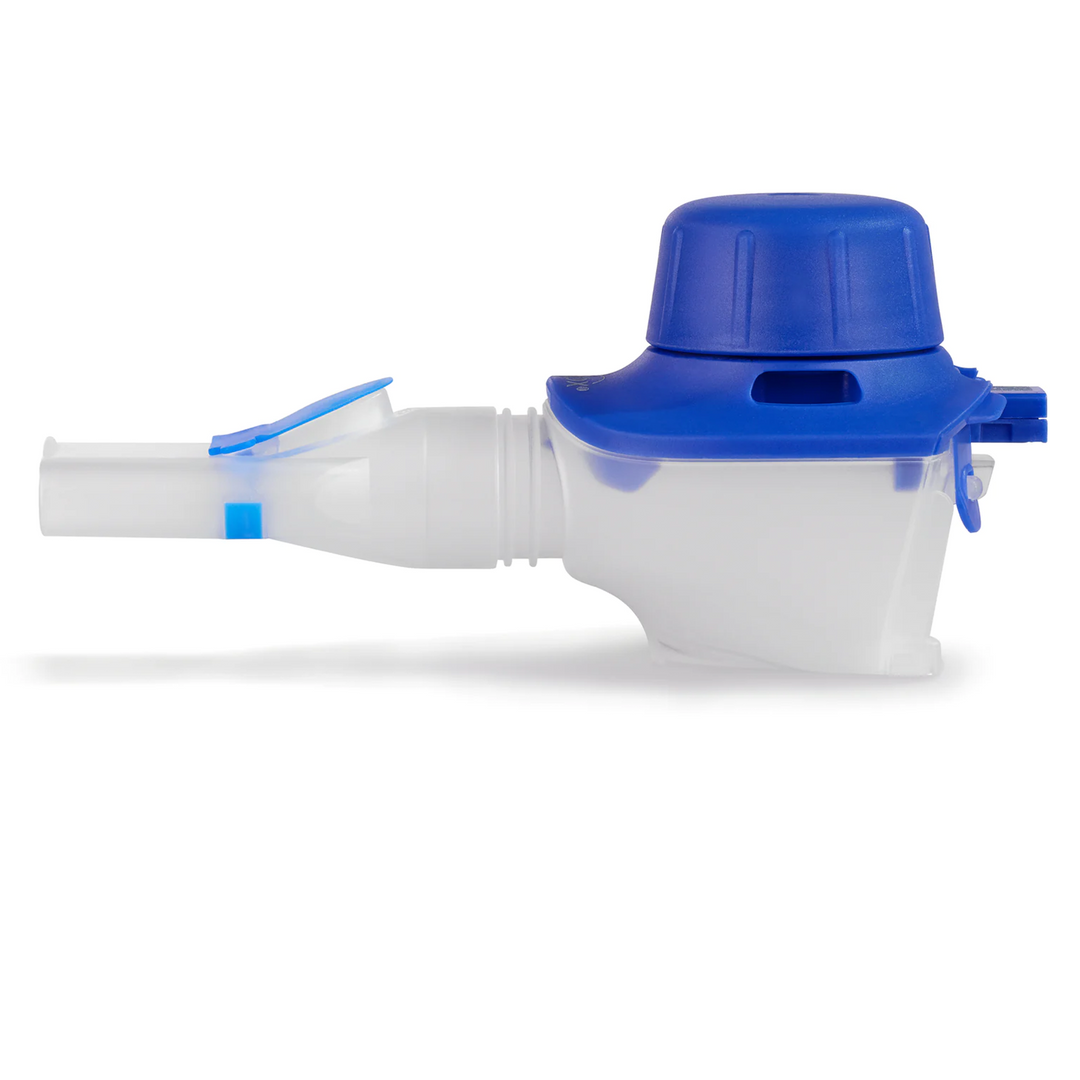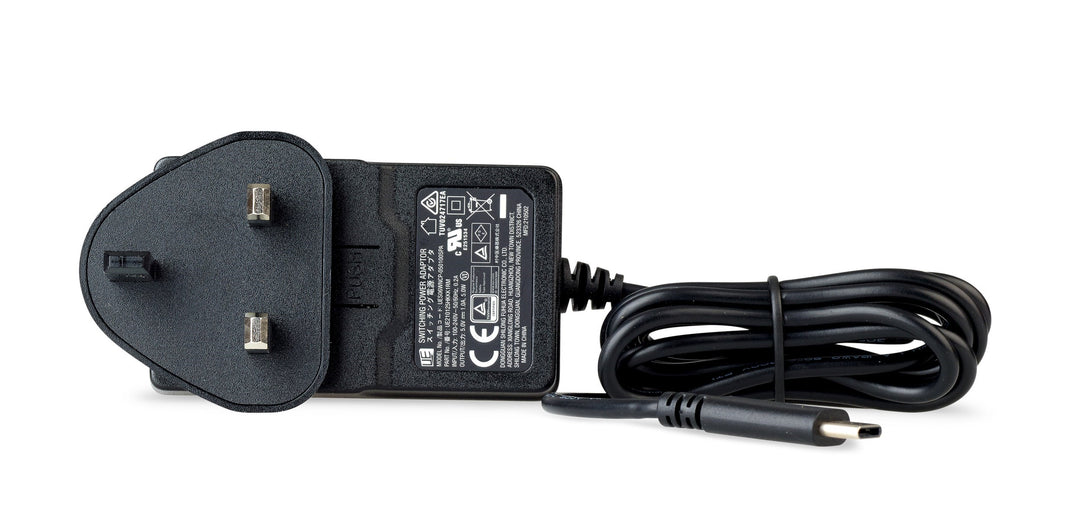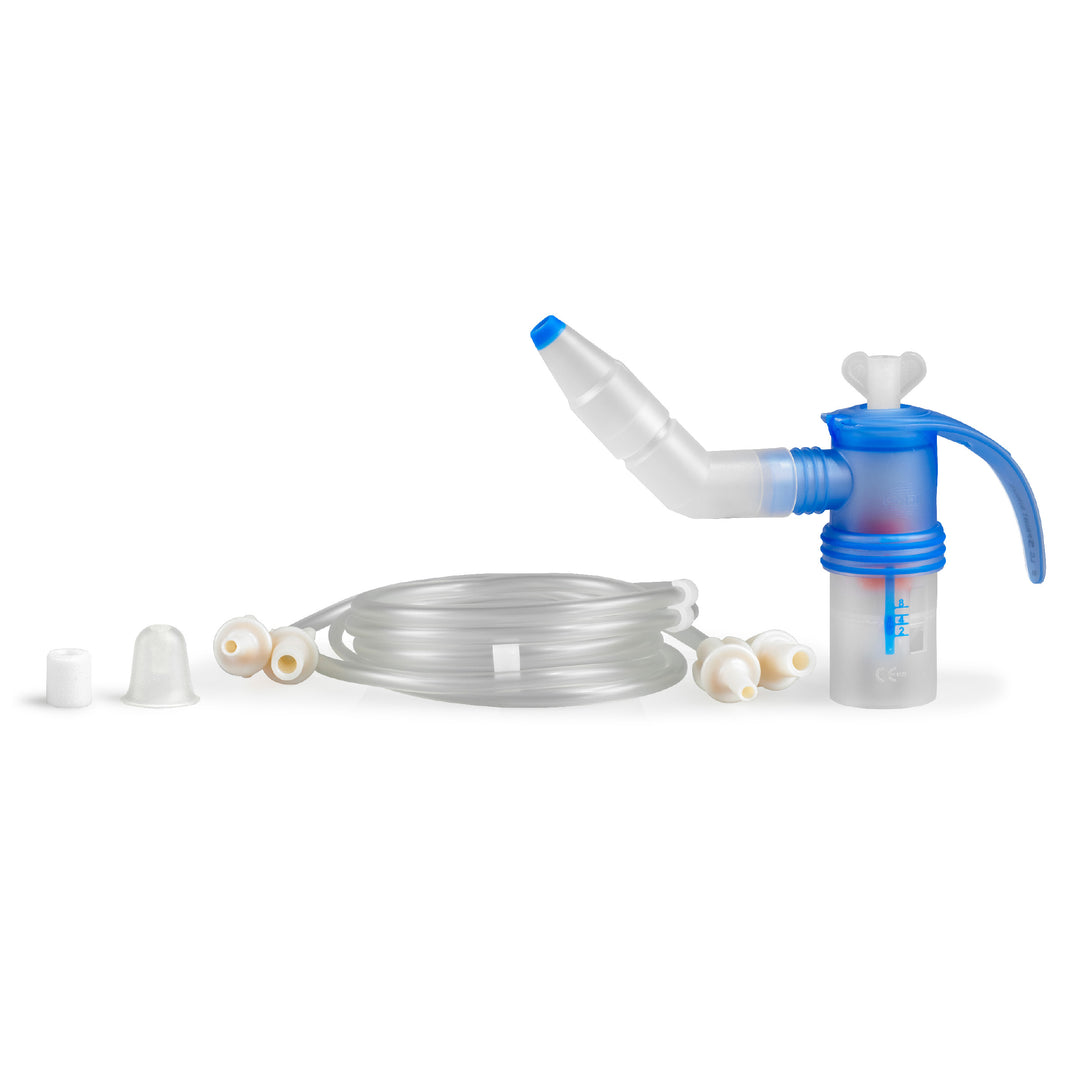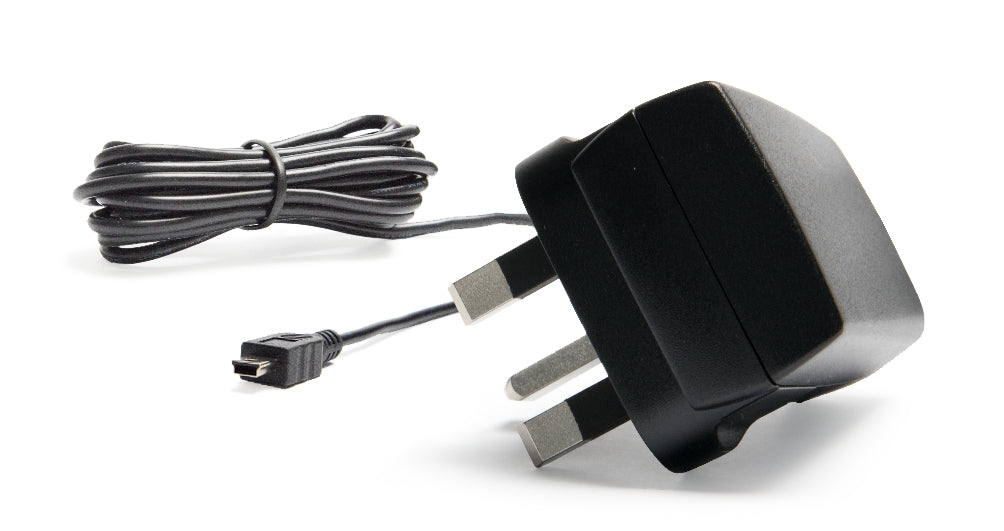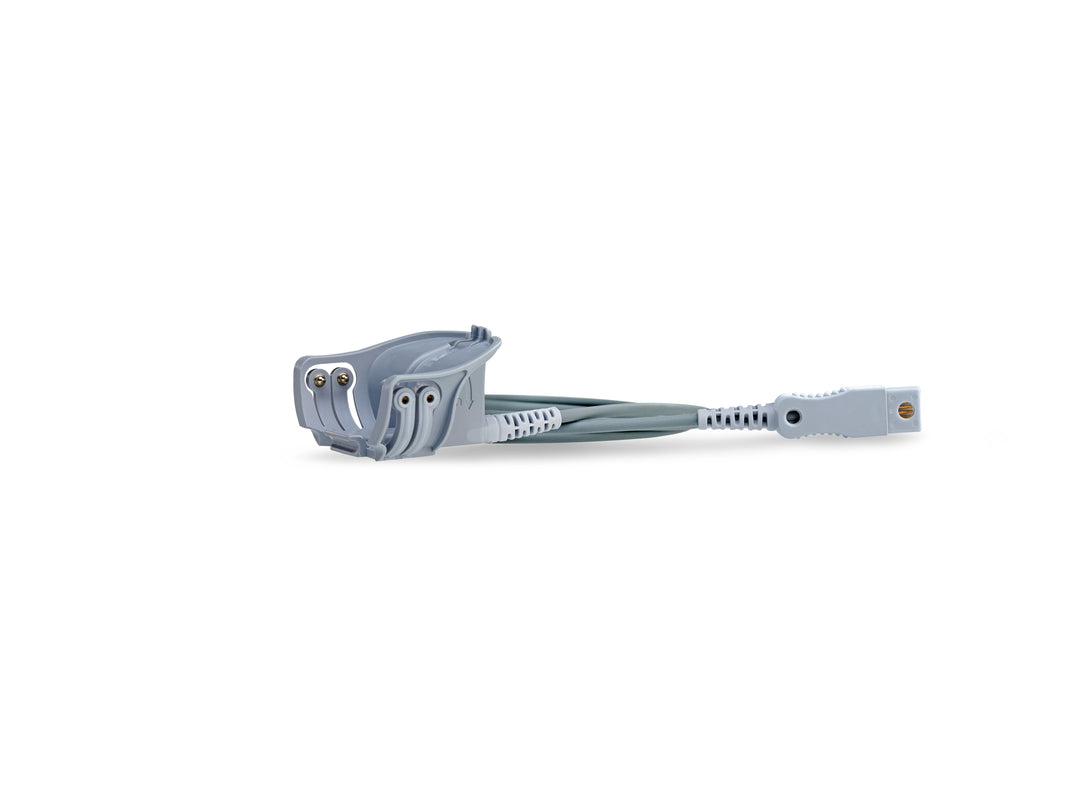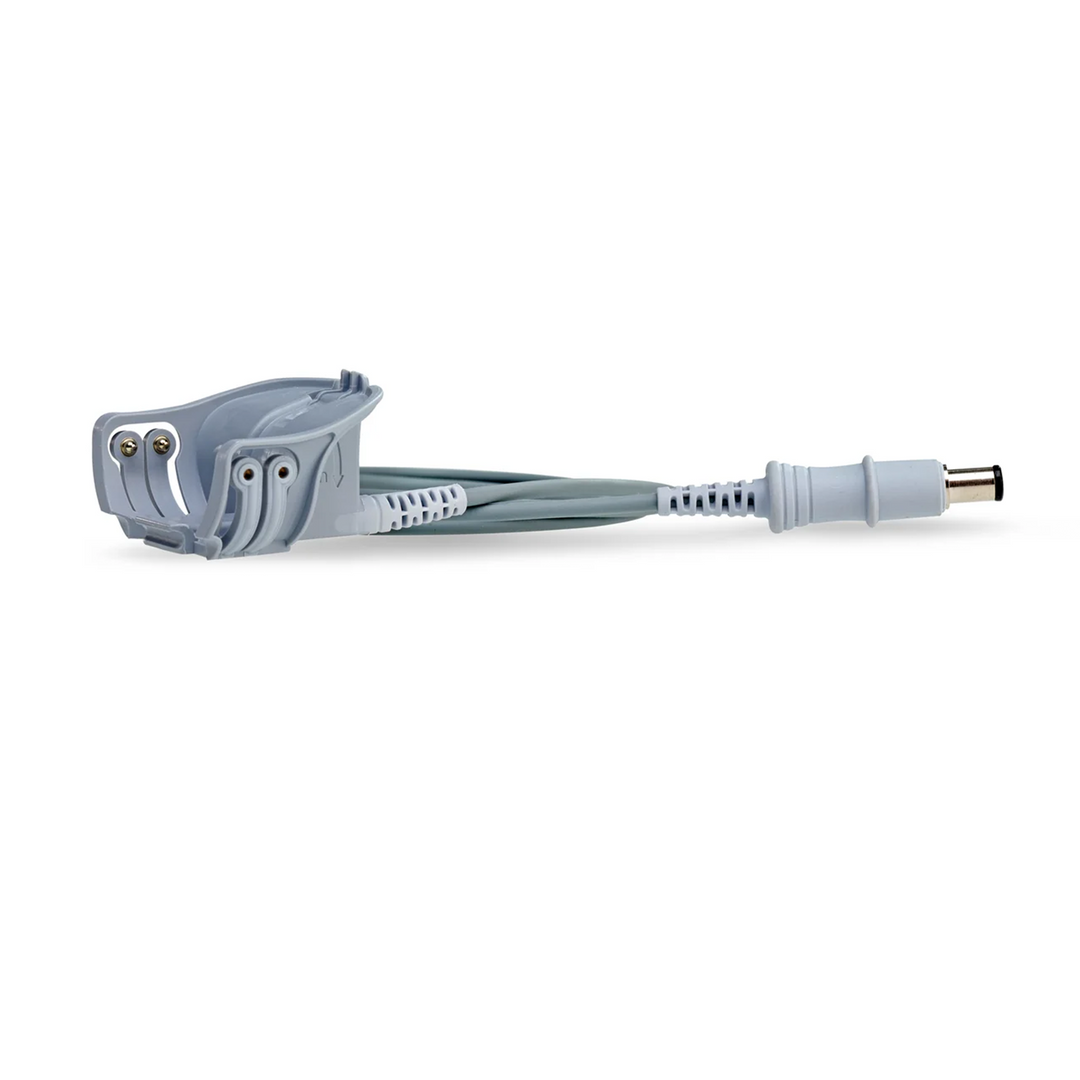
Which is the best nebuliser for COPD in the UK?
Managing COPD can be tough, but it helps to have the right treatment to ease your symptoms. Working with your healthcare team to find the ideal medication and delivery method - in other words, how you take that medication - can be the difference between repetitive hospital admissions and being able to live well despite your COPD.
Many people with COPD use inhalers to take their medication, but this can prove difficult if your breathing is significantly affected by your condition or if you lack the hand co-ordination to work a standard inhaler. In these scenarios, nebulisers can be an effective alternative. In fact, research from Loh et al.(1) suggests that nebuliser therapy can reduce the likelihood of hospital admission in some COPD patients.
What is the best nebuliser for COPD?
Although there has been a lot of research comparing nebulisers to other medication delivery methods like dry powder inhalers (DPIs), less focus has often been placed on the differences between various nebuliser devices on the market.
But just as it’s important to choose the right type of delivery method, choosing the best product for your needs is crucial as well.
How does a nebuliser work on the respiratory system?
In order to understand how one nebuliser can be more effective than another, it’s important to first understand what exactly a nebuliser does. Like inhalers, nebulisers can be used with a range of respiratory medications such as mucus thinners to help ease symptoms related to your breathing.
They do this by converting liquid medications into a fine mist. This is breathed in through your mouth with the help of a mouthpiece or mask, and as you breathe it in, the medication is transported down your windpipe and into your lungs. This usually takes between five to 15 minutes depending on the type of medication, so many people choose to read a book or listen to music or simply rest while they do it.
It’s a fairly simple process, and you might think that there’s no variation between different nebuliser products. In reality, tiny differences in how fine the mist is and how quickly the aerosol mist is released can make a big impact.
These variables are used to calculate the respirable drug delivery rate (RDDR), which is used as a measurement of how effective a nebuliser is. Essentially, the higher the RDDR, the more medication reaches your lungs per minute.
Overall, this means that you can take your medication more quickly and efficiently, making it easier to fit treatment into a busy lifestyle.
Which is the best nebuliser to buy for COPD?
So how can you find out which nebuliser has the best RDDR? Unfortunately, it’s not as simple as looking at the product specifications - even healthcare professionals can find it difficult to accurately assess the efficiency of various nebuliser products when prescribing treatment.
However, in recognition of this challenge, Fischer et al.(3) conducted a study to compare 15 different nebuliser devices on the international market, including a number of PARI nebulisers. The results showed lots of variation in nebuliser efficiency. In fact, the most effective nebulisers delivered two to three times the amount of usable drug per minute compared to the less effective devices. This means more efficient nebulisers could relieve symptoms more quickly.
According to Fischer et al.’s results, of the devices available in the UK, the most effective devices tested were the PARI COMPACT2 and the PARI BOY® Classic.
What this means for you is that these devices are capable of delivering the most medication to your lungs in the shortest time, making it easier for you to fit nebuliser therapy into your daily life. In fact, the PARI BOY® Classic can administer a 2.5ml inhalation solution for adults in just five minutes. This makes it the perfect choice for those looking to use a nebuliser for an everyday maintenance treatment as well as acute flare-ups.
It’s also true to say that RDDR can have a big impact on how quickly your symptoms are alleviated during a flare-up - and naturally, the faster you feel relief, the better.
A 2021 study from Moore et al.(2) also tested the efficiency of a range of nebuliser devices. Inhaled antibiotics can be taken with a nebuliser to tackle lung and chest infections, such as a Pseudomonas infection. Moore et al. studied the growth of Pseudomonas bacteria in laboratory conditions while administering antibiotics via various nebulisers.
The results of the study found that less efficient nebulisers allowed increased bacterial growth and could lead to the development of antibiotic resistance. In practice, using a less efficient nebuliser to inhale antibiotics could impact your ability to fight off a bacterial chest infection - making your COPD worse. At the same time, increased antibiotic resistance could mean antibiotics are less effective for you in future.
It’s clear that choosing the most efficient nebuliser possible is the best choice to help tackle your COPD symptoms, and clinical evidence shows that our PARI mains-powered nebulisers are among the best available in today’s market. So, if you think a nebuliser could be the next step to support your COPD treatment, bear in mind the knock-on effects of device efficiency.
COPD treatment should always be tailored to your specific circumstances, both personal and medical. Always speak to your healthcare professional before changing your method of treatment to ensure that it’s the right choice for you.
Further reading
(1)Loh, Chee H et al. “Suboptimal Inspiratory Flow Rates Are Associated with Chronic Obstructive Pulmonary Disease and All-Cause Readmissions.” Annals of the American Thoracic Society vol. 14,8 (2017): 1305-1311. doi:10.1513/AnnalsATS.201611-903OC Available at: https://pubmed.ncbi.nlm.nih.gov/28406710/
https://www.asthmaandlung.org.uk/symptoms-tests-treatments/treatments/nebulisers
(2) Moore, John E et al. “The Role of Suboptimal Concentrations of Nebulized Tobramycin in Driving Antimicrobial Resistance in Pseudomonas aeruginosa Isolates in Cystic Fibrosis.” Respiratory care vol. 66,9 (2021): 1446-1457. doi:10.4187/respcare.08671 Available at: https://pubmed.ncbi.nlm.nih.gov/34031222/
https://www.asthmaandlung.org.uk/conditions/pseudomonas-infection


